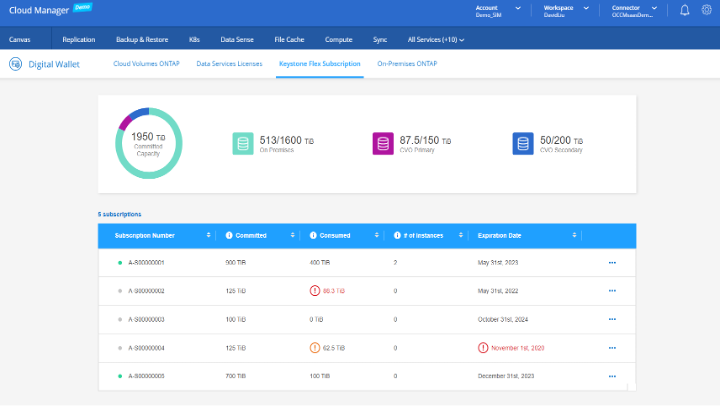
Brought to you by:
Enterprise Strategy Group | Getting to the Bigger Truth™
ESG WHITE PAPER
NetApp Keystone Storage as a Service for the Hybrid Cloud
Modernize Data Center And Hybrid Cloud Storage with Netapp
By Scott Sinclair, ESG Practice Director and Monya Keane, ESG Senior Research Analyst
MAY 2021
Introduction
IT Must Modernize to Keep Pace
On-premises As-a-service Infrastructure Is Transforming IT Operations
Figure 1. Benefits of a Pay-for-use Model for On-premises Infrastructure
What benefits has your organization achieved by leveraging a pay-for-use model? (Percent of respondents, N=191, multiple responses accepted)
Source: ESG, a division of TechTarget, Inc.
NetApp Keystone: Storage as a Service for the Hybrid Cloud
How NetApp’s Hybrid Cloud Approach to STaaS Delivers Transformational Value
Figure 2. NetApp Keystone Capacity Reallocation

Source: Netapp
Figure 3. NetApp Keystone Integration with Cloud Manager

Source: Netapp
Figure 4. NetApp Keystone Storage-as-a-service Options

Source: Netapp
Potential Hybrid Cloud Use Cases
Figure 5. NetApp Keystone Example Hybrid Cloud Use Cases

Source: Netapp
The Bigger Truth
NetApp Keystone: Do data on your terms
This ESG White Paper was commissioned by NetApp and is distributed under license from TechTarget, Inc.
All product names, logos, brands, and trademarks are the property of their respective owners. Information contained in this publication has been obtained by sources TechTarget, Inc. considers to be reliable but is not warranted by TechTarget, Inc. This publication may contain opinions of TechTarget, Inc., which are subject to change. This publication may include forecasts, projections, and other predictive statements that represent TechTarget, Inc.’s assumptions and expectations in light of currently available information. These forecasts are based on industry trends and involve variables and uncertainties. Consequently, TechTarget, Inc. makes no warranty as to the accuracy of specific forecasts, projections or predictive statements contained herein.
This publication is copyrighted by TechTarget, Inc. Any reproduction or redistribution of this publication, in whole or in part, whether in hard-copy format, electronically, or otherwise to persons not authorized to receive it, without the express consent of TechTarget, Inc., is in violation of U.S. copyright law and will be subject to an action for civil damages and, if applicable, criminal prosecution. Should you have any questions, please contact Client Relations at cr@esg-global.com. Enterprise Strategy

Enterprise Strategy Group | Getting to the Bigger Truth™
Enterprise Strategy Group is an IT analyst, research, validation, and strategy firm that provides market intelligence and actionable insight to the global IT community.
